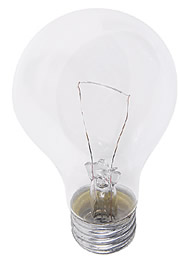More Handheld Computing Blogs
 Wednesday, September 28, 2005 at 8:41PM
Wednesday, September 28, 2005 at 8:41PM  I'd like to recommend two new blogs by educators about handheld computing:
I'd like to recommend two new blogs by educators about handheld computing:
Palms for Patriots is a blog that describes the activities of Debbie Lyles' computer science class at Franklin Parish High School in Winnsboro, Louisiana. Debbie is doing and sharing some amazing activities with the 15 students in her class. For example, Debbie blogs about how she divided the class into groups and their task was to research one of MIT's Participatory Simulations. It's the job of every group to teach the rest of the class the simulation they researched. Expert groups are a great way to empower students and to have them learn new applications!If you are interested in reading other blogs, go to Learning in Hand's Web Links - Blogs page. You should also try searching for blog posts that mention handhelds and learning (or students or education or teaching) at Technorati or Google Blog Search. These sites return results in reverse chronological order, so you see the newest posts reported first. Like blogs, you can subscribe to an RSS feed for the results of your search. That way your aggregator (like Bloglines, Firefox Live Bookmarks, or Safari RSS) will have updated search results whenever your search terms are mentioned in a blog posting. Pretty cool, huh? This is the way I discovered the two blogs I just recommended!NW Handheld Integration Project has a place to blog about handhelds in the classroom. Based in Oregon, this blog features troubleshooting tips, lessons, and Palm applications. There's lots of fun photos and videos from the Northwest Handheld Project's workshops and trainings. Also part of the site is a wonderful section on Handheld Logistics in Middle School. (Ok, this blog is not that new, but I have not specifically previously mentioned it before).







 Local newspapers are beginning to report on the
Local newspapers are beginning to report on the 

 Sixth grade teacher Jason Jaffe at Mill Creek Elementary School in Warrington, Pennsylvania has
Sixth grade teacher Jason Jaffe at Mill Creek Elementary School in Warrington, Pennsylvania has  I've found that the batteries in handhelds are one of the first things to go out. With Palm handhelds, it can be costly or difficult to replace batteries. I have many Palm m515s in a cabinet at school that no longer hold a charge. Right now it doesn't seem worth it to seek battery replacement. Fortunately, my iPAQ 5400 has a removable battery so when it gave out (from being left on the charger for months on end), I found an inexpensive replacement on eBay. Unfortunately, now I have an iPod mini in need of a new battery. I can find a battery cheap on the web, but it doesn't look at all easy to actually change.
I've found that the batteries in handhelds are one of the first things to go out. With Palm handhelds, it can be costly or difficult to replace batteries. I have many Palm m515s in a cabinet at school that no longer hold a charge. Right now it doesn't seem worth it to seek battery replacement. Fortunately, my iPAQ 5400 has a removable battery so when it gave out (from being left on the charger for months on end), I found an inexpensive replacement on eBay. Unfortunately, now I have an iPod mini in need of a new battery. I can find a battery cheap on the web, but it doesn't look at all easy to actually change. Stephen from Indianapolis, Indiana writes:
Stephen from Indianapolis, Indiana writes:
